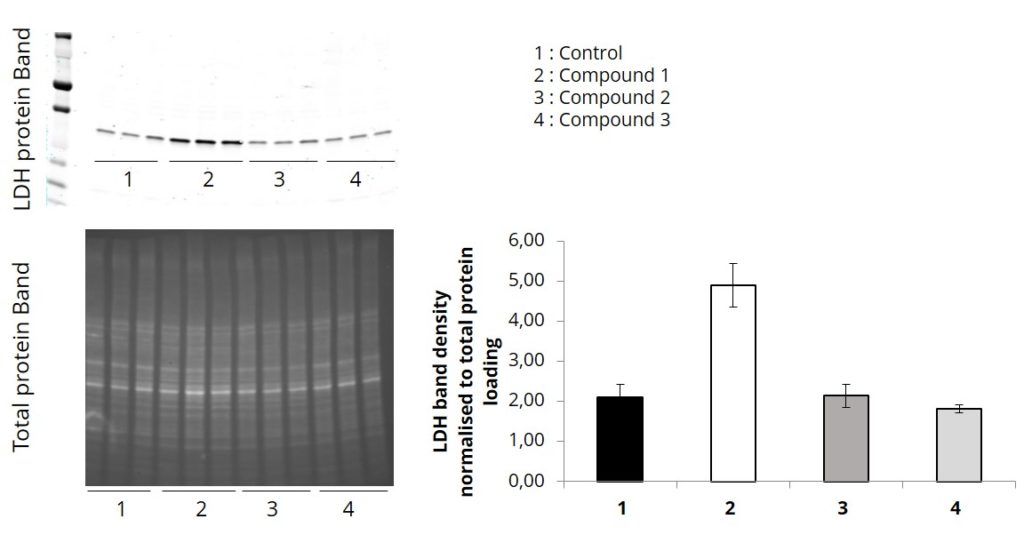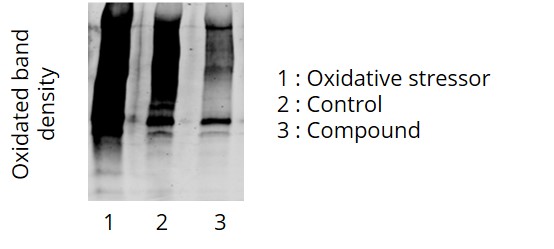
Precise protein analysis
The Western Blot is an analytical method that detects and quantifies specific proteins in a protein mixture. The principle consists of separating proteins according to their molecular weight or charge and then applying labeled antibodies, to visualize the desired proteins.
This reference technique can provide a detailed description of the mechanism of action of a product on a specific cellular pathway.

Specific protein quantification by Western Blot
Indeed, it is possible to assay one or more proteins belonging to the same cellular pathway to demonstrate the mechanism of action. Also, at Elysia Bioscience, normalization is not performed on a reference protein (e.g. actin) but on all proteins present, for a more realistic and accurate normalization.

Oxyblot
Among its applications, the Western Blot technique can be used to reveal oxidized proteins. Indeed, oxidized proteins have a modification of their carbonyl groups. These modifications are then detected on a blot.
Overall, the Oxyblot technique allows you to quickly explore the anti-oxidant power of a compound in a simple, visual, and quick way.
Applications
- Details of the mechanism of action by specific proteins
- Evaluate protein modifications (oxidation, phosphorylation)
- Obtain detailed scientific data
Advantages
- Fast analysis
- Protein separation by size (sensitive and specific)
- Simultaneous detection of several targets
- Normalization to total amount of protein
